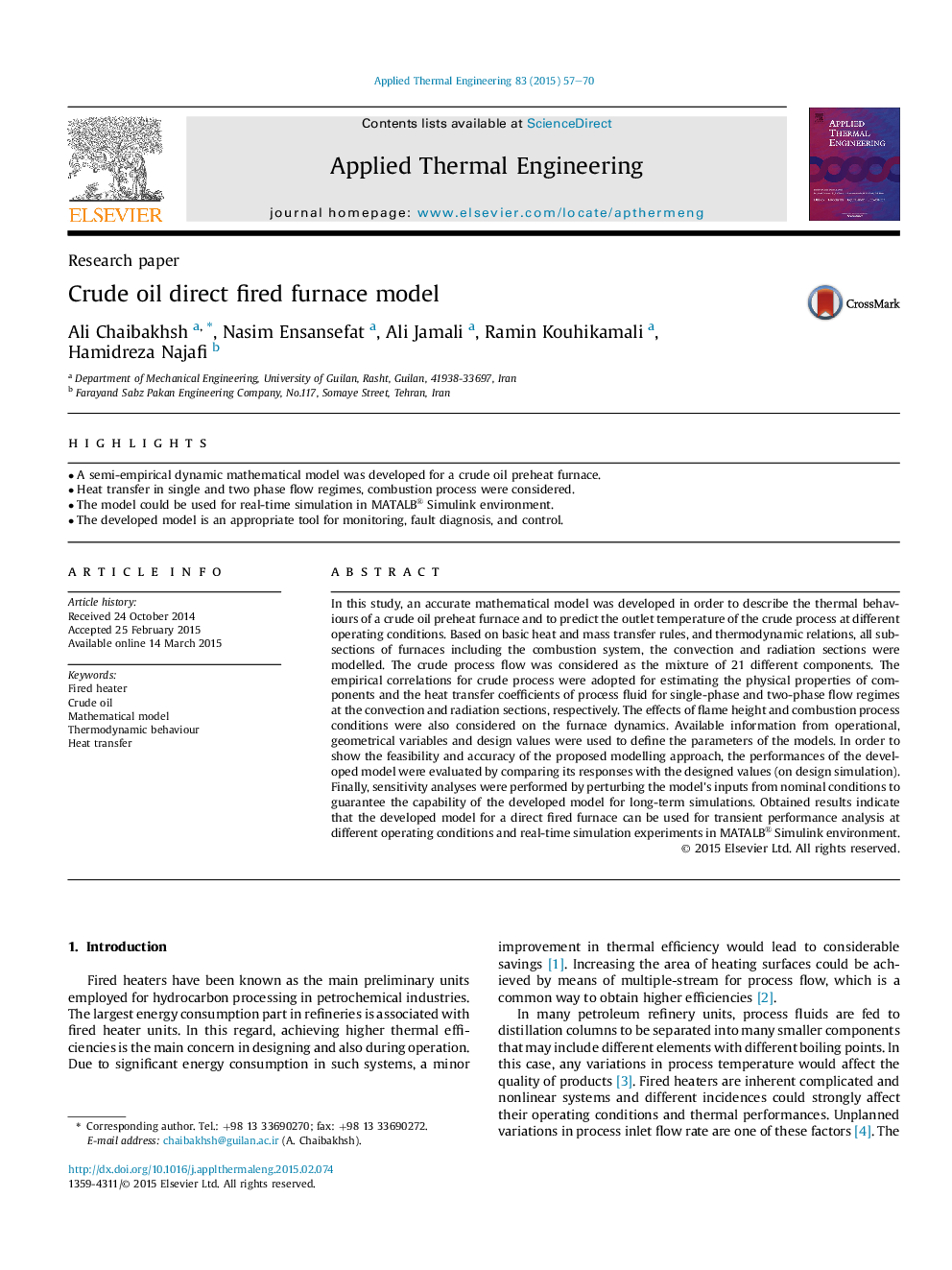| Article ID | Journal | Published Year | Pages | File Type |
|---|---|---|---|---|
| 645648 | Applied Thermal Engineering | 2015 | 14 Pages |
•A semi-empirical dynamic mathematical model was developed for a crude oil preheat furnace.•Heat transfer in single and two phase flow regimes, combustion process were considered.•The model could be used for real-time simulation in MATALB® Simulink environment.•The developed model is an appropriate tool for monitoring, fault diagnosis, and control.
In this study, an accurate mathematical model was developed in order to describe the thermal behaviours of a crude oil preheat furnace and to predict the outlet temperature of the crude process at different operating conditions. Based on basic heat and mass transfer rules, and thermodynamic relations, all sub-sections of furnaces including the combustion system, the convection and radiation sections were modelled. The crude process flow was considered as the mixture of 21 different components. The empirical correlations for crude process were adopted for estimating the physical properties of components and the heat transfer coefficients of process fluid for single-phase and two-phase flow regimes at the convection and radiation sections, respectively. The effects of flame height and combustion process conditions were also considered on the furnace dynamics. Available information from operational, geometrical variables and design values were used to define the parameters of the models. In order to show the feasibility and accuracy of the proposed modelling approach, the performances of the developed model were evaluated by comparing its responses with the designed values (on design simulation). Finally, sensitivity analyses were performed by perturbing the model's inputs from nominal conditions to guarantee the capability of the developed model for long-term simulations. Obtained results indicate that the developed model for a direct fired furnace can be used for transient performance analysis at different operating conditions and real-time simulation experiments in MATALB® Simulink environment.
